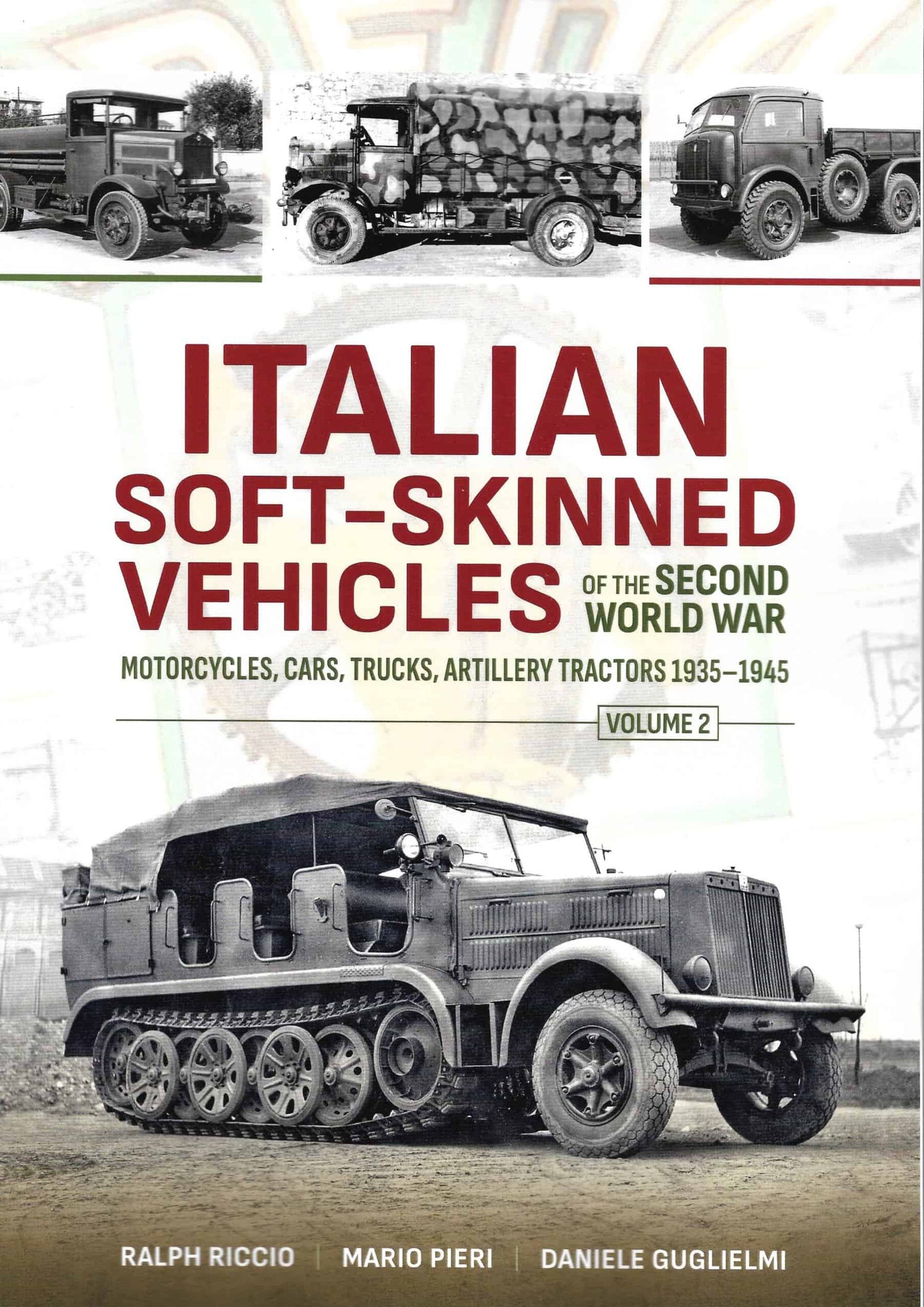Italian Soft-Skinned Vehicles of WW2, Volume 2
Usually shipped within 24 hours
UK deliveries from £5.95
Delivery & Returns
Delivery & Returns
We use the Royal Mail, DHL Express or UPS for our customers. For UK addresses, deliveries under 10kg are a standard £4.95 via Royal Mail Tracked 48 Service. For orders over 10kg and overseas customers, postage is calculated for you at checkout once you have entered your postal address. This price, does not include any potential custom charges that may apply, depending on the product or destination, as every country has very different import duties / taxes. Online exclusive products (such as trainers) will be delivered to you directly from the printer, separate from other items in your order, but your postage fee covers ALL items in your order.
If you are unhappy with your purchase, please email shop@tankmuseum.org within fourteen (14) working days of receiving your goods, and return it to us at the address below, in its original condition, unopened (with any seals and shrink-wrap intact) and we will issue you a full refund or replace it. Goods must be returned at your own cost. If the item is faulty, you do not need to return it, we will send you a replacement free of charge.
Description
Description
The importance of land transport vehicles within an armed force is often underestimated by the average reader, attracted by more ‘martial’ subjects such as tanks and artillery. Nevertheless, it was thanks to motorcycles, cars, trucks and tractors that – since the early years of the twentieth century – men, weapons, ammunition, provisions, fuel, equipment and orders were transported, all elements without which AFVs, guns and infantry are unable to fight.
Volume 2 examines medium and heavy trucks, artillery tractors, special purpose vehicles and trailers. The main text is complemented with appendices on vehicle colouring and markings, manufacturers, production facts and further details.
It is a common opinion that the Italian Army was beaten above all because of the poor quality of its combat vehicles. Impartial and in-depth studies, made since the end of the war, have revealed that the main problem was the shortage of vehicles, as well as an entirely insufficient logistics chain. The tank crews were able to compensate with bravery and experience for the fact that their tanks were, from a certain point on, inferior to those of their enemies, but the inadequate number of AFVs and other materiel was impossible to remedy. The same problem plagued the entire sector of military soft-skinned vehicles, a sign of Italy’s limited industrial capacity (and of procurement of raw materials and components) compared, for example, to its ally Germany. There were too few factories, too few skilled workers, and poor management skills within the armed forces.
models of efficient, robust and resistant vehicles were produced, especially in the sector of the so-called ‘standardized’ motor vehicles. These vehicles allowed the Italian troops to move and fight in the large and difficult territories of North Africa, the Balkans and the Soviet Union and brought home what was left of the defeated soldiers.
This is the first English-language study describing the soft-skinned vehicles of the Italian Armed Forces, starting from the 1930s, when Mussolini’s Italy faced some colonial conflicts and participated – albeit unofficially – in the Spanish Civil War, and throughout the Second World War. For each vehicle there is a file describing its evolution and the main technical aspects, accompanied by one or more photographs and, for the most significant examples, line drawings. The work is enriched by a historical introduction, various appendices and color profiles.
![Italian Soft-Skinned Vehicles of WW2, Volume 2 Book [variant_option4]](http://tankmuseumshop.org/cdn/shop/files/9022_146594a7-de01-47c3-825a-b28e293f9bf4.jpg?v=1748336363&width=1214)

![Italian Soft-Skinned Vehicles of WW2, Volume 2 Book [variant_option4]](http://tankmuseumshop.org/cdn/shop/files/9022_146594a7-de01-47c3-825a-b28e293f9bf4.jpg?v=1748336363&width=88)
![Christmas Tank Museum Wrapping Paper - Two sheet pack Wrapping Paper [variant_option4]](http://tankmuseumshop.org/cdn/shop/files/DSC2318.jpg?v=1759225755&width=176)
![Italian Soft-Skinned Vehicles of WW2, Volume 2 Book [variant_option4]](http://tankmuseumshop.org/cdn/shop/files/9022_146594a7-de01-47c3-825a-b28e293f9bf4.jpg?v=1748336363&width=640)



